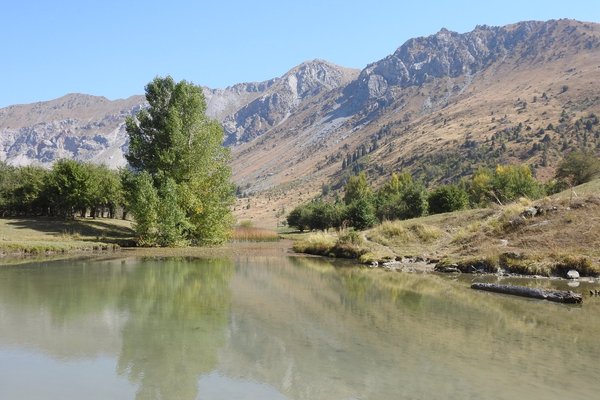Kazakhstan, Kyrgyzstan, Uzbekistan
Western Tien-Shan
The Western Tien-Shan is a Central Asian mountain range known for its plant biodiversity.
Especially its wild fruit and walnut forest are among the largest remaining in the world, thus providing a genetic resource for domestic fruit species. Furthermore, mammals such as Snow Leopard, Wild Sheep and Argali live in these mountains. The site consists of 13 parks and nature reserves, divided over Kazakhstan, Kyrgyzstan and Uzbekistan.
Community Perspective: Come here for some moderate mountain hiking, see flora such as the wild tulip and purple and yellow iris, and taste wild apples and plums. Solivagant covered Aksu-Zhabagly Nature Reserve (Kazakhstan), Jarek and Els Sary Chelek Nature Reserve (Kyrgyzstan), and Clyde the Bashkizilsay area of the Chatkal State Biosphere Nature Reserve (Uzbekistan).
Site Info
Official Information
- Full Name
- Western Tien-Shan (ID: 1490)
- Countries
- Kazakhstan Kyrgyzstan Uzbekistan
- Status
-
Inscribed 2016
Site history
History of Western Tien-Shan
- 2016: Advisory Body overruled
- IUCN advised Deferral, WHC went for inscription with deletion of criterion 8
- 2016: Inscribed
- Inscribed
- 2015: Incomplete - not examined
- Type
- Natural
- Criteria
- x
Links
- UNESCO
- whc.unesco.org
- Official
-
- karatau-gpz.kz — Kazakhstan: Karatau State Nature Reserve
- aksu-jabagly.kz — Kazakhstan: Aksu-Jabagly State Nature Reserve
- sugnpp.kz — Kazakhstan: Sairam-Ugam State National Nature Park
All Links
UNESCO.org
- whc.unesco.org — whc.unesco.org/
Official Website
- karatau-gpz.kz — Kazakhstan: Karatau State Nature Reserve
- aksu-jabagly.kz — Kazakhstan: Aksu-Jabagly State Nature Reserve
- sugnpp.kz — Kazakhstan: Sairam-Ugam State National Nature Park
Community Information
- Community Category
- Natural landscape: Mountain
Travel Information
Serial Transnational Sites
Recent Connections
-
Golden jackal
Nomination file has 6 references to gol…
-
Inscribed on a single criterion only
Crit X -
Strict Nature Reserve
Partly. Aksu-Jabagly State Nature Reser…
Connections of Western Tien-Shan
- Geography
-
-
On National Border
Elements are on the National Borders between Uzbekistan/Kyrgyzstan, Kazakhstan/Kyrgyzstan and Kazakhstan/Uzbekistan -
Glaciers
A number of the inscribed elements include contemporary glaciers e.g Aksu Jabagly - "The largest glaciers are situated in the basins of rivers: Zhabaglysu – Jabagly glacier (2.63 km2), Baldybrek – Shunkulduk glacier (2.56 km2), Aksu-Amansai glacier (1.02 km2). The area of most glaciers does not exceed 1 km2 " (Nom File) -
Territorial Highest points
Khan Tengri 7010m: the highest point in Kazakhstan
-
- Trivia
-
-
Greatest Altitude Variations
ranges in altitude from 700 to 4,503 m above sea level
-
- Ecology
-
-
Golden jackal
Nomination file has 6 references to golden jackal
-
Gray Wolf
-
Strict Nature Reserve
Partly. Aksu-Jabagly State Nature Reserve and Besh-Aral State Nature Reserve. Access does not seem restricted ("Aksu-Jabagy contains a visitor centre and one hotel, with more accommodation being constructed nearby. In 2010, there were just over 2,000 visitors to the site. ") -
Snow leopard
-
- Damaged
-
-
Affected by Climate Change
Glaciers in Western Tien-Shan (Kazakhstan, Kyrgyzstan, Uzbekistan) have shrunk by 27% since 2000See www.unesco.org
-
- World Heritage Process
-
-
Serial Transnational Sites
3 countries -
Inscribed on a single criterion only
Crit X
-
- WHS on Other Lists
-
-
Biodiversity hotspot
Mountains of Central Asia -
Centres of Plant Diversity
CA3 Mountains of Middle Asia - "The Western Tien-Shan supports outstanding diversity of plant and animal species with high level of endemism and many species of global conservation importance. Western Tien-Shan has an exceptional value as a centre of origin of cultivated plants. It is home to a number of wild species related to domesticated fruit plants" -
World Biosphere Reserves
Karatau Biosphere Reserve (Kazakhstan) 2017, Aksu Zhabagly was made a WBR in 2015See www.unesco.org
-
- Timeline
-
-
Holocene
The Tienshan mountains were uplifted, folded, metamorposed etc in the Paleozoic Era (540-250mybp). But, from 25mybp, faulting and sedimentation changed the landscape. Then finally the entire area was glaciated during the late Pleistocene and Holocene. So what we see today is a largely (but of course not completely) "post glacial" Holocene landscape
-
- Visiting conditions
-
-
Foreigner prices
Sary Chelek NP: 400 Som for foreigners, 100 Som for Kyrgyz
-
- WHS Names
-
-
Named after a Mountain
"The Tian Shan...also known as the Tengri Taghor Tengir-Too, meaning the Mountains of Heaven or the Heavenly Mountain or Mountains of God, is a large system of mountain ranges in Central Asia. The highest peak in the Tian Shan is Jengish Chokusu, at 7,439 metres (24,406 ft) high"
-
News
No news.
Recent Visitors
Visitors of Western Tien-Shan
- Alexander Barabanov
- Alexander Lehmann
- Alexander Parsons
- Ask Gudmundsen
- Atila Ege
- Bin
- Bram de Bruin
- Cheryl
- Clyde
- CugelVance
- CynthiaSam
- David Marton
- eljx1988
- Els Slots
- Fan Yibo
- Frederik Dawson
- Gernot
- henryjiao18
- Ingrid
- Ivan Rucek
- Janos
- Jarek Pokrzywnicki
- Jawnbeary
- Jean Lecaillon
- Jeffrey Chai
- jonas
- Jonas Kremer
- JoshHad
- KarenBMoore
- Kasper
- Kevin McFarland
- Knut
- Lado Joel
- Loic Pedras
- Ludvan
- Luis Filipe Gaspar
- Luke LOU
- Maciej Gil
- marcel staron
- Marcobrey
- Martin
- Mathijs
- Michael Turtle
- MoPython
- nan
- Nihal Ege
- Philipp Leu
- pressdm
- rivr
- Roman Bruehwiler
- Shannon O'Donnell
- Solivagant
- Stanislaw Warwas
- SymonMajewski
- Szucs Tamas
- Tarquinio_Superbo
- Thomas Buechler
- Westwards
- Wojciech Fedoruk
- Wo_ko
- Xiquinho Silva
- Yevhen Ivanovych
- Zoë Sheng
Community Reviews
Show full reviews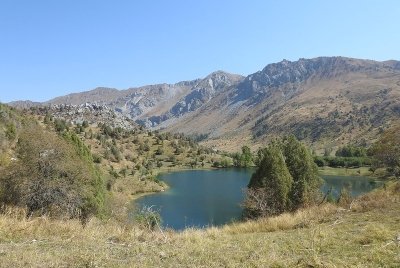
The Western Tien-Shan (situated in Kazakhstan, Kyrgyzstan, and Uzbekistan) is the westernmost part of the Tianshan mountain range, and the eastern part (in China) is a separate WHS under the name of Xinjiang Tianshan.
I visited one of the three components in Kyrgyzstan: Sary Chelek National Park. I did so with a private driver annex guide, whom I had hired to take me from Bishkek to Osh in 5 days. We stopped for one night each in Toktogul and Arslanbob (known for its walnut forests), and for two nights in Arkit, the gateway to Sary Chelek National Park. It’s a fairly remote site, some 100km from the next sizeable town. The winding road leading up there however is almost fully paved. During summer the park sees a lot of tourists, and numerous homestays and yurt camps have opened up.
The things to look out for when you want to experience this site’s OUV, are the wild fruit and nut forests. These were also the main goal of our hike during the first late afternoon. Although the farming village of Arkit already lies in the core zone, the proper entrance to the park lies on its outskirts. We were allowed to enter by the friendly park ranger although they already had closed for the day – we would be back the next day and pay our fees.
This indeed is a very forested area, especially compared to the almost barren Kyrgyzstan that I had seen so far. Some …
Keep reading 0 comments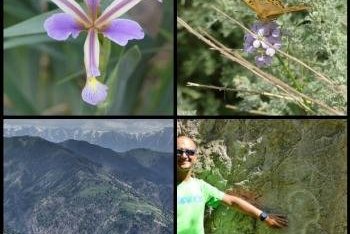
I visited this WHS in June 2017. I had already seen the snow capped Western Tien Shan mountains from afar in Turkestan, Kazakhstan and while crossing the border to Uzbekistan. However, since I had more free time available in Tashkent and since the best month to visit the inscribed reserves in Kazakhstan is in April/May (especially for flora), I opted for a very long day trip from Tashkent in Uzbekistan to the Bashkizilsay area of the Chatkal State Biosphere Nature Reserve.
We left Tashkent with a private driver very early before sunrise heading towards Nevich on a 4x4 vehicle. We arrived near Nevich after 90 minutes on tarmac roads as it is only 65km from the Uzbek capital. The 4x4 vehicle came in handy from there onwards as we drove offroad, zigzagging uphill on what seemed like tractor trails on semi-cultivated hills. The blue glacial streams from the still snowy Tien Shan mountain peaks (35+ degrees when we visited in June!) got bigger and the small dwellings and ski 'resorts' got smaller the further on we drove. We stopped at around 900-1000m above sea level and started a moderate 9 hour loop hike up to around 1500-1600m in the Bashkizilsay area with a local mountain guide we had picked up near Nevich.
The UNESCO nomination file map and coordinates came in handy when organizing the trip and the guide took us on a moderate loop hike to appreciate the coniferous trees, gorges, small waterfalls, Tien Shan mountain scenery (bottom left …
Keep reading 0 comments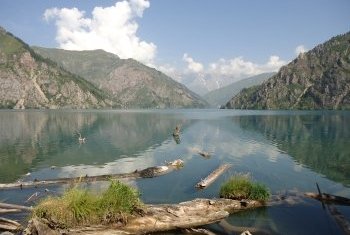
Site just visited, July, 2017. As Paul carefully described Aksu-Zabagly National Park I will focus on Sary Chelek Nature Reserve in Kyrgyzstan, which comparing both sites I found much more interesting.
Sary Chelek is accessible by public transport. From Osh Bus Station (new one, north of the town centre) there is an everyday bus (marszrutka) to Sary Chelek (Arkit village) - 400 Kyrgyz som per seat, in theory it goes around 7.40 in the morning, when full goes earlier so it is advisable to be there around 7.20. You arrive in Arkit around 4 p.m.
Arkit seems to be well prepared for extensive tourism, many of village buildings are homestays, campsites, there are shops with basic food in the village. According to WHS website, being in Arkit, you are already within the borders of National Park, but the most interesting and scenic part of it lies a little bit more further, around the lakes.
To get there you should pass a toll both (price for foreigners to enter the reserve is 400 Kyrgyz som, no discounts for students or children), there is also a 400 Kyrgyz som fee for a car but locals seem to avoid that. There are around 8 km (road is not paved) from Arkit village to Sary Chelek lake, although local people tend to double that distance. Official price for the car to get to the lake is around 1000-1500 som (both ways, including waiting time), if walking it should be around 2 hours, one way.
…
Keep reading 0 comments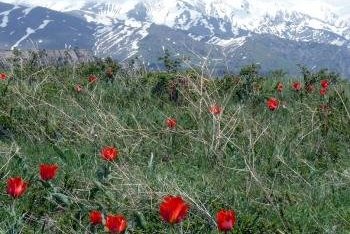
When planning to visit the W Tien Shan WHS during our May 2017 visit to Kazakhstan we were faced with the problem of which of the 7 locations situated inside that country (mostly in the general area of Shymkent/Taraz) we should aim for! In the end we chose the Aksu-Zhabagly Nature Reserve. It would appear that this is the most popular for non specialist visitors – it is set up to provide tourist entry to the reserve and is easy to access by road or rail from both the above mentioned cities – and thus for taking in on a route across Southern Kazakhstan without too much of a detour.
The nomination of W Tien Shan received a negative evaluation from IUCN who, among other matters, were not happy with the diffuse nature of the serial locations. In the end the WHC inscribed it solely on Criterion 10 for its biological diversity – but 2 locations in Kazakhstan described as “Palaeontological sites” were still inscribed despite the removal of Criterion 8 (“examples representing major stages of earth's history, including the record of life, significant on-going geological processes in the development of landforms…” etc). And that of course raises the issue of why you might want to visit this WHS. It is undoubtedly most significant for its flora and fauna and Aksu Zhabagly majors particularly on the former. The UK Natural History travel company Greentours raves about its “ rare Primula minkwitziae and a wide range of bulbs including lots of …
Keep reading 0 comments
